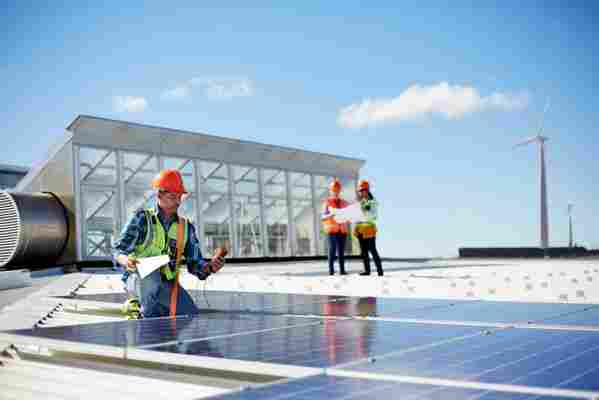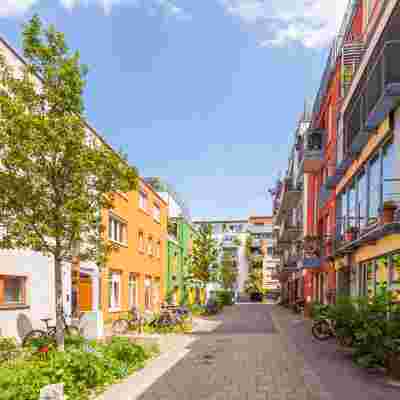July 09,2022
What Would a 'Green New Deal' Look Like for Architecture?
by David Stewart
Newly elected Congresswoman Alexandria Ocasio-Cortez got tongues wagging this month when she championed a plan for a Green New Deal, and drafted a proposal to kickstart the committee that would create it. While she’s not the first to suggest the idea, timing and the cultural climate are apt for a renewal of the discussion.
Ocasio-Cortez’s plan, which emphasizes decarbonization, job creation, and social and economic justice, is politically audacious—it aims for 100 percent renewable energy within 12 years —but in line with the Intergovernmental Panel on Climate Change (IPCC)'s most recent warning that the world has about a decade to get climate change under control if we are to thwart its worst effects. With close to half of all greenhouse gas emissions coming from the built environment, architects and designers should feel welcome wading into the conversation.
In the past, buildings were designed to hold people and things and to receive energy along a one-way artery from a faraway grid. Under a Green New Deal, that way of building would be considered outdated and obsolete. Instead, buildings would be considered mini power plants that can not only produce enough energy to supply their own needs, but also fuel vehicles and send excess energy back to the grid.

Going forward, the best new buildings will perform like mini power plants that can not only support their own electrical needs but also send excess energy back to the grid.
“There’s a loosening of the boundaries around things that define energy—they’re not siloed anymore,” says Jacob Corvidae, a principal at the Rocky Mountain Institute's Buildings Practice. “Suddenly, a building is not just a building.”
Corvidae believes all new construction should already be held to such standards. “We should stop the bleeding now,” he explains. “If you don’t build it to zero-energy now, you run the risk of being obsolete in ten years.” In other words, any building not designed to meet net-zero-energy standards is already archaic.
A Green New Deal would inject capital, job training, and manufacturing incentives into the system, accelerating the pace of a green economy. Building green infrastructure would be a major source of employment, and would help establish better social and economic equity, too; reliable, multimodal transit infrastructure to and from working-class neighborhoods would provide access to more jobs, schools, grocery stores , and other essentials they may currently be isolated from.
Better infrastructure also builds resiliency for those communities—an important element in the face of ever more extreme weather events. Design that considers this helps ensure that some communities aren't marginalized and isolated afterward, and considers environmental impact, too. “Having lived through Hurricane Harvey, it’s so important to recognize that we are living in transitional times where the transformation of the built environment for resilience is key,” says Rives Taylor, sustainability leader at Gensler in Houston. “This means not building in a way where we have to throw away much distressed or damaged material after events like this.”

An example of lower-income green housing in Germany.
Meanwhile, more efficient buildings would also help relieve the energy-burden shouldered by low-income communities, who spend disproportionately on utility bills.
“There’s a pretty clear indication that the future is electric,” says Corvidae, citing the uptick of new homes with electric heating systems , car manufacturers like GM going all electric , and Ford’s investment in electric scooter share company Spin. “There is such clear disruption happening in the energy sector and the transportation sphere,” says Corvidae. “Buildings are maybe five to ten years behind [those industries].” But change is coming, with or without a Green New Deal. The questions are how fast new technologies will become mainstream, who can afford to invest in them, and who will benefit most.






